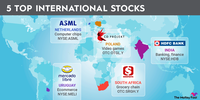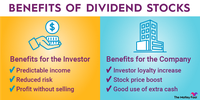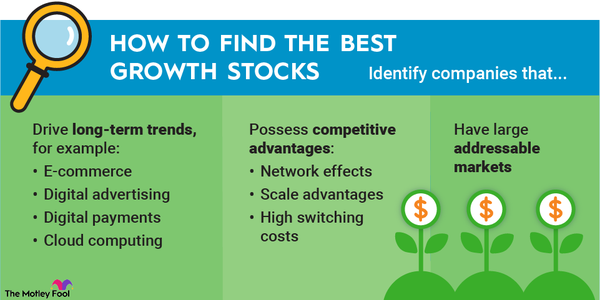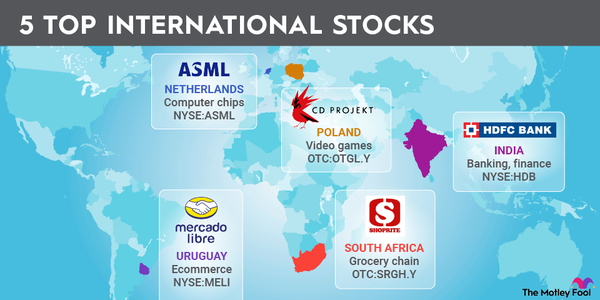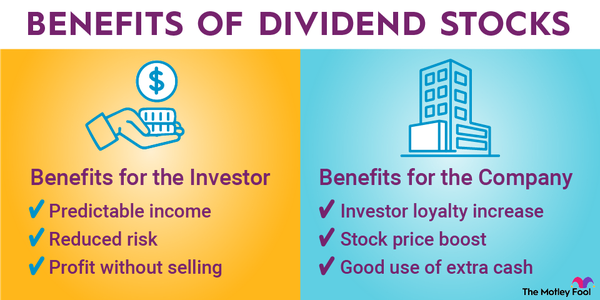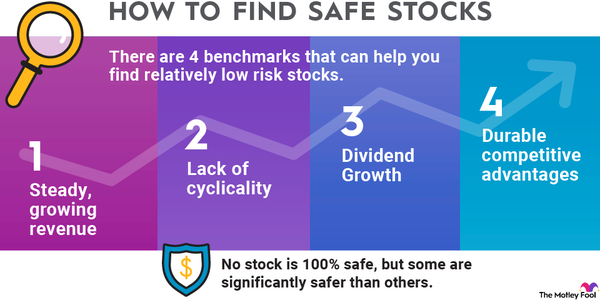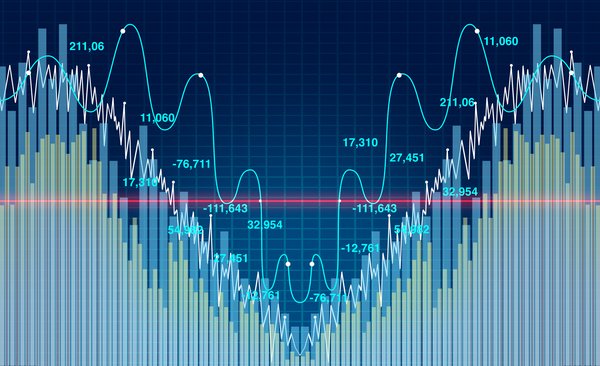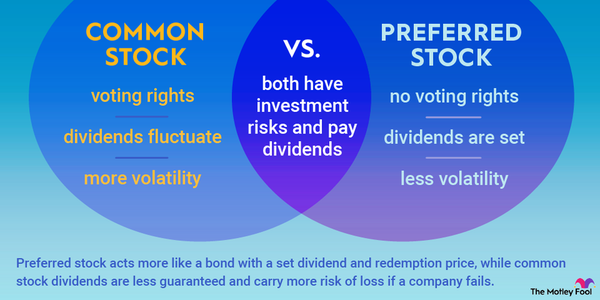While many investors get excited about owning shares in small, fast-growing companies, others prefer the stocks of established household names that provide a sense of stability and security. However, even the most successful investors tend to overlook a significant portion of the stock market: mid-cap stocks.
Like Goldilocks' chair, medium-cap stocks are the not-too-big, not-too-small companies that are "just right" for investors who want a combination of growth and profitability. If your portfolio already holds a lot of small-cap or large-cap companies (or both), adding some mid-cap stocks can help you to diversify your portfolio.
Here's a closer look at mid-cap stocks, including how to choose the best ones and how to decide if mid-cap stocks are right for you.

What are mid-cap stocks?
What are mid-cap stocks?
Mid-cap stocks are stocks of companies with medium-size market capitalizations or valuations. They're so named because they fall between small-cap and large-cap stocks.
A stock is classified as mid-cap when the total value of all of the company's shares outstanding falls between $2 billion and $10 billion. Here's how stocks are generally classified by market capitalization:
| Category | Market Capitalization |
|---|---|
| Micro-cap companies | Less than $300 million |
| Small-cap companies | $300 million to $2 billion |
| Mid-cap companies | $2 billion to $10 billion |
| Large-cap companies | $10 billion to $200 billion |
| Mega-cap companies | More than $200 billion |
Mid-cap companies include fast-growing, young companies that have outgrown their small-cap origins, as well as mature companies operating in stable and profitable corners of the market. The COVID-19 pandemic made technology more important than ever and helped make some previously small businesses into much larger ones.
While small-cap stocks are often fast-growing but volatile, and large-cap stocks tend to be relatively slow-growing but stable, the best mid-cap stocks are often somewhere in between. Mid-cap companies are both less volatile than fast-growing small-caps and have more growth potential than mammoth large-cap companies.
Three great stocks
Three great mid-cap stocks and funds to buy
Don't be surprised if you don't immediately know the name of every mid-cap stock that we highlight below. Some mid-cap companies are household names, but many aren't, especially those that operate in specialized industries.
Here are three excellent mid-cap stocks:
1. Ambarella
1. Ambarella
Ambarella (AMBA 3.34%) is a relatively small company in a market segment -- semiconductors, or computer chips -- that is dominated by giants. Ambarella isn't a chipmaker itself; rather, it designs components that then get manufactured by its chip fabrication partners.
Specifically, Ambarella focuses on computer vision (CV) semiconductors, which use artificial intelligence (AI) to help a computer system "see," recognize what's in a field of vision, and make decisions based on that information. Applications include security cameras and autonomous vehicles, with the latter expected to be a huge growth market in the next couple of decades.
2. Clover Health Investments
2. Clover Health Investments
Clover Health Investments (CLOV 1.25%) is a fast-growing company in the healthcare insurance space. It became public in January 2021 via a merger with a special purpose acquisition company (SPAC) managed by Chamath Palihapitiya, the former Facebook (META -1.73%) executive turned venture capitalist.
Clover currently operates as a Medicare Advantage insurance company, but with a twist. Its software integrates directly with healthcare providers' operations, eliminating the layers of bureaucracy that traditionally plague healthcare plans. Although it has yet to achieve full-year profitability, the company is on a clear path to reaching breakeven and could seriously disrupt the massive healthcare industry.
3. Iridium Communications
3. Iridium Communications
Originally designed as a global telecommunications network, Iridium Communications (IRDM -0.98%) was launched in 1998 -- and bankrupt by 1999. It's more than rebounded since then, though.
The company's fortunes are tied to SpaceX, which it used to launch 75 next-generation satellites into low Earth orbit between 2017 and 2019, even as it is a quasi-competitor of Starlink – which is more focused on the U.S. internet market than Iridium's global telecom focus. Even so, Iridium reported strong user growth during the second quarter of 2024 and predicted service revenue growth (about 76% of total revenue) of between 4% and 6% for 2024.
Mid-cap ETFs
Mid-cap ETFs
Not sure which individual mid-cap stock or stocks to pick? A mid-cap-focused exchange-traded fund (ETF) can help diversify your portfolio by providing exposure to a wide range of mid-cap stocks. Two of our picks for mid-cap-focused ETFs are:
1. Vanguard Mid-Cap ETF
The Vanguard Mid-CAP ETF (VO 1.6%) tracks the performance of the CRSP US Mid Cap Index. This fund holds both growth- and value-oriented companies and contains more than 300 stocks. It pays a small dividend and is affordable, with an expense ratio -- the fund's annual management fee -- of just 0.04%.
2. iShares S&P Mid-Cap 400 Growth ETF
The iShares S&P Mid-Cap 400 Growth ETF (IJK 0.35%) invests specifically in mid-cap growth stocks. The ETF holds a basket of U.S. stocks (almost 300) with particularly high growth potential but also relatively volatile share prices. This ETF is an inexpensive option, with an expense ratio of just 0.17% annually.
How to evaluate
How to evaluate top mid-cap stocks
Since mid-cap stocks are often former small-cap stocks, the process of finding the best ones is similar to searching for great small-cap companies. Generally, you are looking for companies with visionary leaders operating in growing industries, a business model with competitive advantages, and a track record of rewarding investors.
Most importantly, you should see a history of sales and profit growth. If a company is lacking either, make sure to understand why. Below is guidance for evaluating both sales growth and profit growth:
- Sales growth: For mid-cap companies with growth potential, sales should be consistently increasing over time. That growth shows that the company's business is a good one with the potential to sustain itself. Another good sign is when a company's sales are growing faster than those of larger companies. If sales aren't growing, take that as a warning sign. It's essential to discover a good reason for this before you invest.
- Profit growth: A stock's price tends to correlate with the company's profits. If a company's earnings are growing, then its stock price typically rises. Of course, fast-growing companies aren't always profitable, and, in those cases, losses should be consistently shrinking as sales grow. If losses are increasing even while sales are rising, then it's important to understand the reasons why. For example, if a business is aggressively investing to expand into a new area, then shrinking profitability might be acceptable for a time.
Related investing topics
Are mid-cap stocks for you?
If you can hold an investment for five years or more, are comfortable with occasional price volatility, and are seeking to balance growth with volatility, then mid-cap stocks may have a place in your portfolio.
To get started on investing, do your homework before you buy. If you're not prepared to do the research required to evaluate individual mid-cap stocks or don't want to devote the time necessary to do so, then consider adding a mid-cap ETF or mutual fund to your diversified portfolio.


